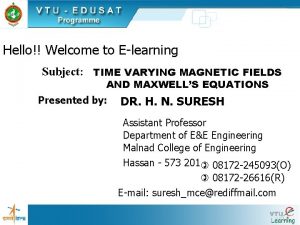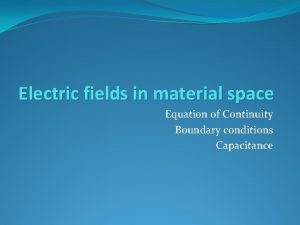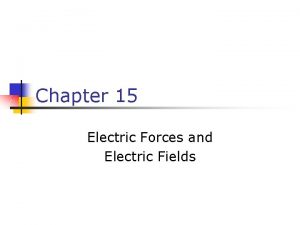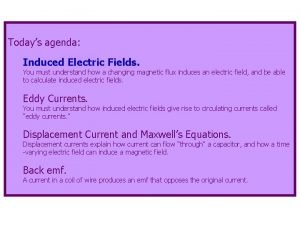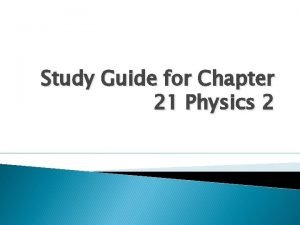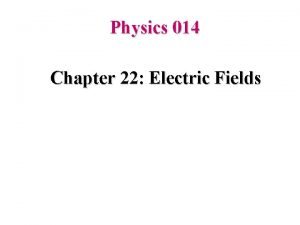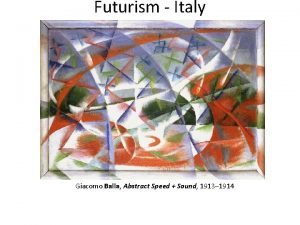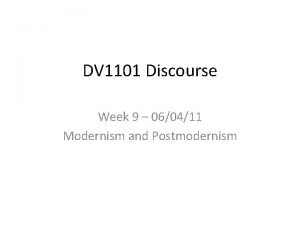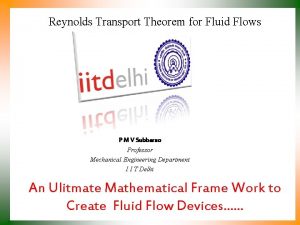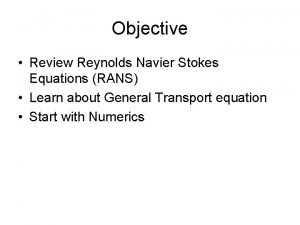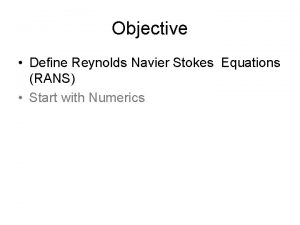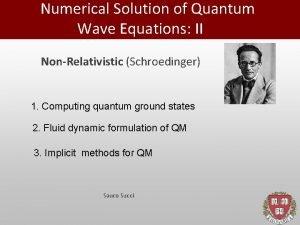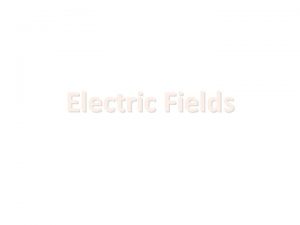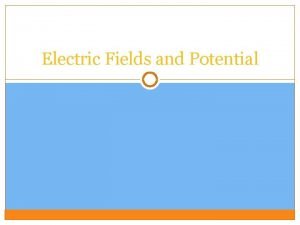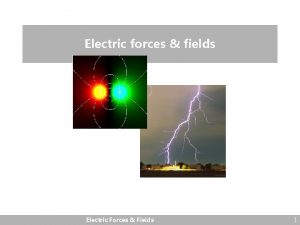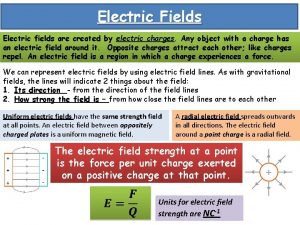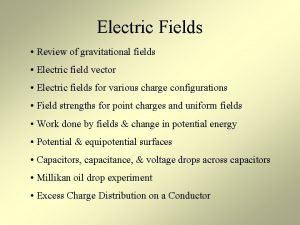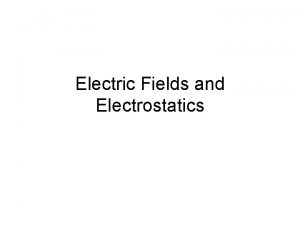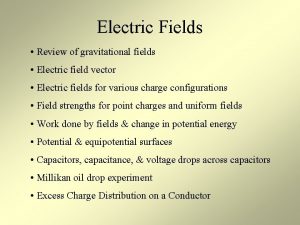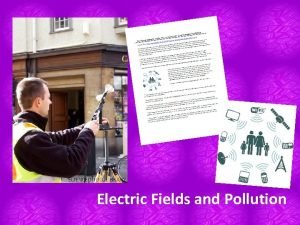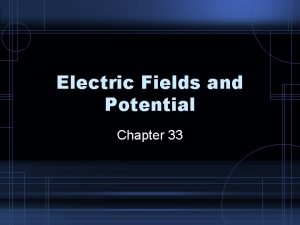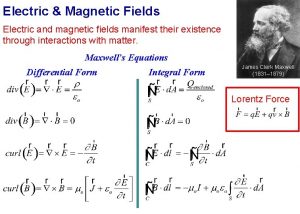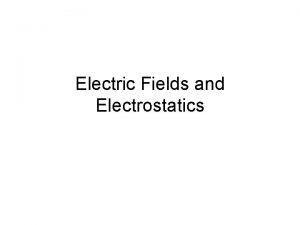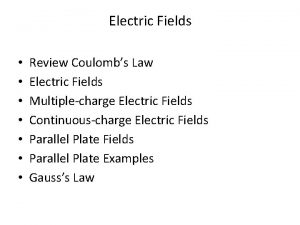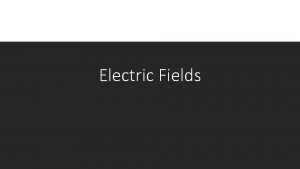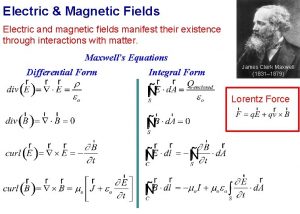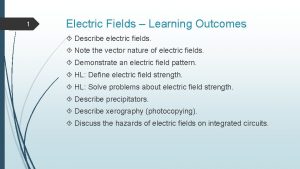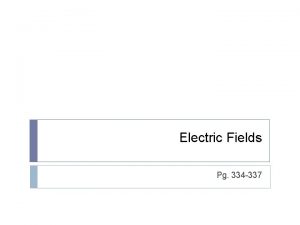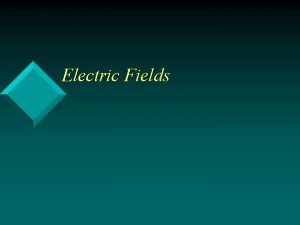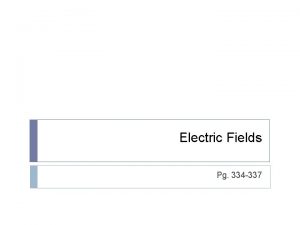Electric fields in material space Equation of Continuity






















- Slides: 22

Electric fields in material space Equation of Continuity Boundary conditions Capacitance

Module I �Introduction to EMFT �Coordinate systems and transformations �Vector fields, Divergence and curl �Divergence and Stokes theorem �Electric fields, Electric scalar potential �Types of potential distribution, Potential Gradient �Energy stored, Electric boundary conditions, Capacitance �Steady current and current density, Equation of continuity �Magnetic fields, Energy stored �Magnetic dipole �Magnetic boundary conditions �Vector magnetic potential, Magnetic field intensity

Boundary Conditions �Helpful in determining the field on one side of the boundary if the field on the other side is known. �Steps: Use Maxwell’s Equations � 1) Decompose Electric field into orthogonal components, apply maxwell’s eqn � 2) Similarly, decompose Electric flux density D.

1) Dielectric-Dielectric B. C � � �Applying maxwell’s eqn (1) To the closed surface abcda

1) Dielectric-Dielectric B. C �When we consider that (Tangential components of E are same at both sides) �Et is said to be continuous across the boundary. �Since , �So Dt undergoes some changes across the boundary �Dt is discontinuous across the boundary.

1) Dielectric-Dielectric B. C �At �If no free charges exists , �So, Dn is continuous across the interface. En is discontinuous across the interface

Summarizing �Dt is discontinuous across the interface. �Et is continuous across the boundary. �Dn is continuous across the interface. �En is discontinuous across the boundary. �These equations are collectively called as electric boundary conditions. �Used for finding the field at one side of the boundary if the field at the other surface is known. �Used for finding the refraction of the electric field across the boundary

Relation Between Angle of Incidence and Permittivity Refraction (Dielectric-Dielectric) �Consider E 1/E 2 making Angles with normal Dividing,

Conductor-Dielectric B. C �For the conductor, E = 0 for the conductor. �Follow same steps for the Dielectric-dielectric interface But consider that E=0 inside the metallic portion

Applying eqns to the pillbox, � ( � )

For a perfect conductor,

Applications: �Electrostatic screening

Conductor-Free space B. C �Special case of conductor-dielectric B. C �Replace �

Capacitance (Farads) �Ability of a body to hold an electrical charge. � 2 conductors with equal but opposite charges �Flux lines leaving one conductor must necessarily terminate at the surface of the other conductor.

Capacitors �The conductors are sometimes referred to as the plates of the capacitor. �The plates may be separated by free space or a ielectric.

Capacitance �Consider a 2 conductor capacitor � �E field will be normal to the surface �We define the capacitance C of the capacitor as the ratio of the magnitude of the charge on one of the plates to the potential difference between them � ( )

Finding the capacitance (Steps) 1. Choose a suitable coordinate system. 2. Let the two conducting plates carry charges + Q and -Q. 3. Determine E using Coulomb's or Gauss's law and find V from 4. Obtain C from C=Q/V � Parallel Plate Capacitor � Coaxial Capacitor � Spherical Capacitor

Parallel Plate Capacitor �Plate area: S �Distance of separation: d �Charges, +Q, -Q � Charge density, �Ideal capacitor: d<<S

Parallel Plate Capacitor �According to coulomb’s law, � � (Derivation not needed) �So for a parallel plate capacitor, � (C 0: Capacitance when air is between plates) �Energy stored,

Coaxial Capacitor �By applying Gauss’ Law, � �Potential Difference, �Capacitance is given by, ea Surface ar

Spherical Capacitor � �

Special cases �If the outer plate of a capacitor is infinitely large, � (Spherical conductor at a large distance from other conducting bodies – isolated sphere) � Notes � �If & , we can say �This expression gives the relaxation time, Tr
 Equation of continuity for time varying fields
Equation of continuity for time varying fields Equation of continuity in electromagnetism
Equation of continuity in electromagnetism Red fields to green fields
Red fields to green fields Electric field in material space
Electric field in material space Electric potential and electric field
Electric potential and electric field Absolute continuity implies uniform continuity
Absolute continuity implies uniform continuity Electric forces and fields concept review
Electric forces and fields concept review Chapter 16: electric forces and fields answers
Chapter 16: electric forces and fields answers Electric fields quiz
Electric fields quiz Chapter 33 electric fields and potential
Chapter 33 electric fields and potential Electric fields
Electric fields Electric fields
Electric fields Induced electric field in solenoid
Induced electric field in solenoid Chapter 21 study guide electric fields answers
Chapter 21 study guide electric fields answers Electric currents and magnetic fields
Electric currents and magnetic fields Electric currents and magnetic fields
Electric currents and magnetic fields Chapter 22 electric fields
Chapter 22 electric fields Abstract speed and sound
Abstract speed and sound Alfred barr
Alfred barr Reynolds transport theorem continuity equation
Reynolds transport theorem continuity equation Derivation of navier stokes equation
Derivation of navier stokes equation Navier stokes equation momentum
Navier stokes equation momentum Schroendiger
Schroendiger
